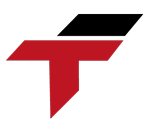In modern automation systems, data is everything but without visualization, data means little. Trend graphs in Human Machine Interfaces (HMI) turn raw information into actionable insights, helping industries across Malaysia make smarter, faster, and more informed decisions.
What Are Trend Graphs in HMI Systems?
Trend graphs serve as a visual representation of real-time and historical process data in industrial control systems. They allow operators to see how parameters such as temperature, pressure, or motor speed change over time, offering immediate feedback on system performance.
How Do Trend Graphs Work in HMI Systems?
Trend graphs function as dynamic visualization tools that gather and display process data from multiple sources. They operate based on real-time data acquisition, configuration logic, and customizable visualization parameters.
- Data Acquisition and Tag Configuration: HMIs collect process data from PLCs, sensors, and controllers using communication protocols such as Modbus or OPC UA. Each variable, called a “tag,” represents a measurable parameter that feeds into the trend graph for display.
- Real-time vs Historical Data Trends: Real-time trends show current system performance, while historical trends store and display long-term records for analysis. Together, they help engineers evaluate both short-term changes and long-term performance stability.
- Graph Customization and Visualization Control: Operators can configure axes, scales, update intervals, and sampling rates to fine-tune how data appears. This ensures that the visualization is both accurate and aligned with process needs, improving monitoring precision.
How Do Trend Graphs Work in HMI Systems?
What Are the Key Benefits of Using Trend Graphs in Automation?
In industrial environments, trend graphs deliver significant operational, analytical, and compliance benefits, turning data visualization into a competitive advantage.
- Real-time Performance Insights: By continuously displaying performance metrics, operators gain immediate visibility into machine conditions, enabling quick adjustments that maintain process stability and product quality.
- Predictive Maintenance and Fault Diagnosis: Historical data trends can reveal gradual changes in system behavior, allowing teams to predict failures and schedule maintenance proactively. This reduces unplanned downtime and improves asset lifespan.
- Ensuring Quality and Compliance: Trend graphs help maintain process consistency by tracking critical variables for audits and certifications. They support Malaysian industries in meeting ISO and regulatory standards through reliable data records.
How Are Trend Graphs Integrated with Other Automation Systems?
Trend graphs do not operate in isolation; they work seamlessly with other automation layers such as PLCs, SCADA, and cloud systems to form a unified industrial control network.
Integration with PLC and SCADA Systems: HMI trend data is often synchronized with SCADA software and PLCs, ensuring that operators at every level have access to consistent and real-time information for coordinated control.
Cloud-based Data Storage and Remote Access: Modern HMIs can upload trend data to the cloud, enabling engineers to access performance dashboards remotely. This supports IIoT-based remote monitoring and long-term data analytics.
Enterprise-level Connectivity with MES and ERP: By connecting trend graphs with MES and ERP systems, businesses achieve complete visibility from the shop floor to management. This data integration fuels smarter decision-making across departments.
Where Are Trend Graphs Used Across Malaysian Industries?
Across Malaysia’s manufacturing, energy, and food sectors, trend graphs are central to data-driven operations and performance optimization.
- Manufacturing and Assembly Lines: Factories use trend graphs to monitor machine speed, production output, and overall equipment efficiency. This visibility supports lean manufacturing and continuous improvement.
- Food and Beverage Processing: In regulated sectors like food production, trend graphs track temperature, flow rate, and other parameters critical to safety and quality control under HACCP standards.
- Oil, Gas, and Energy Applications: Energy plants rely on continuous trend monitoring to ensure operational safety, optimize energy use, and respond quickly to process deviations in critical systems.
What Are the Common Software Tools for Trend Graphs in Malaysia?
Several leading HMI software platforms offer robust trend graph capabilities tailored for industrial use in Malaysia.
- Leading HMI Software Solutions: Popular tools such as Siemens WinCC, Mitsubishi GT Designer3, Omron NB Designer, and Schneider EcoStruxure support advanced trend visualization and configuration options.
- Local Automation Providers and Integrators: Malaysian system integrators specialize in implementing customized HMI trend solutions for industries ranging from electronics to food processing, ensuring compatibility and local support.
- Supporting Malaysia’s Industry 4.0 Vision: Government programs like Industry4WRD encourage manufacturers to adopt digital visualization tools, helping local industries modernize and compete globally through smarter automation.
What Are the Common Software Tools for Trend Graphs in Malaysia?
What Does the Future for HMI Trend Visualization?
As industrial automation evolves, trend graphs are moving beyond simple visualization to predictive and intelligent analytics.
- AI-driven Predictive Visualization: Artificial intelligence can analyze trend patterns to detect anomalies, predict maintenance needs, and optimize process parameters automatically.
- AR/VR and Mobile HMI Integration: Augmented reality and mobile dashboards are giving engineers on-the-go access to live trend data, enhancing flexibility and responsiveness.
- Cybersecurity and Data Protection: With increased connectivity comes greater responsibility future HMIs will prioritize encrypted communication and secure data storage to protect critical industrial information.
Conclusion
Trend graphs in HMI systems are vital tools for data-driven decision-making in Malaysia’s industrial automation landscape. By visualizing process performance, predicting failures, and integrating with Industry 4.0 technologies, they empower manufacturers to operate smarter, safer, and more efficiently.


